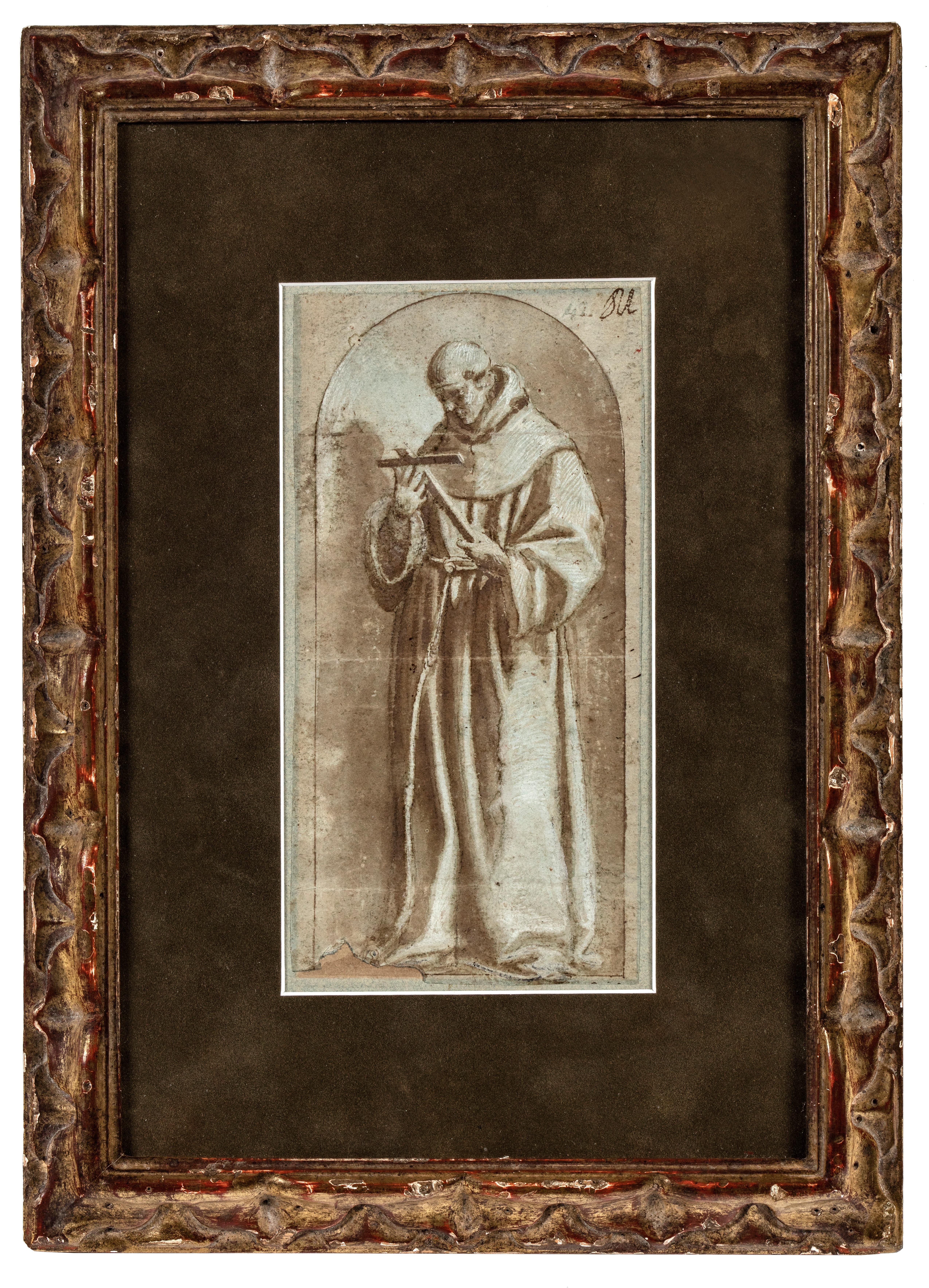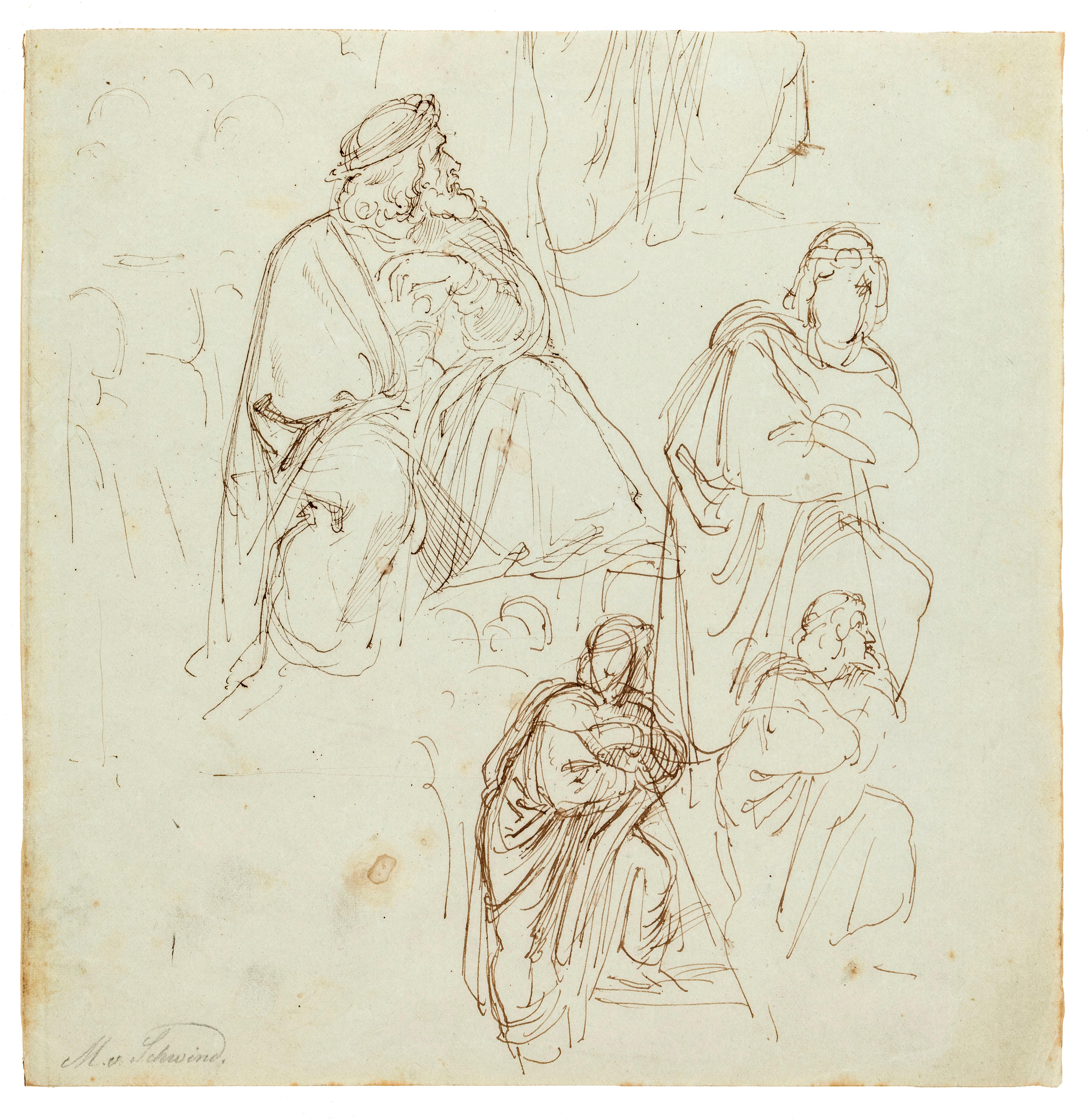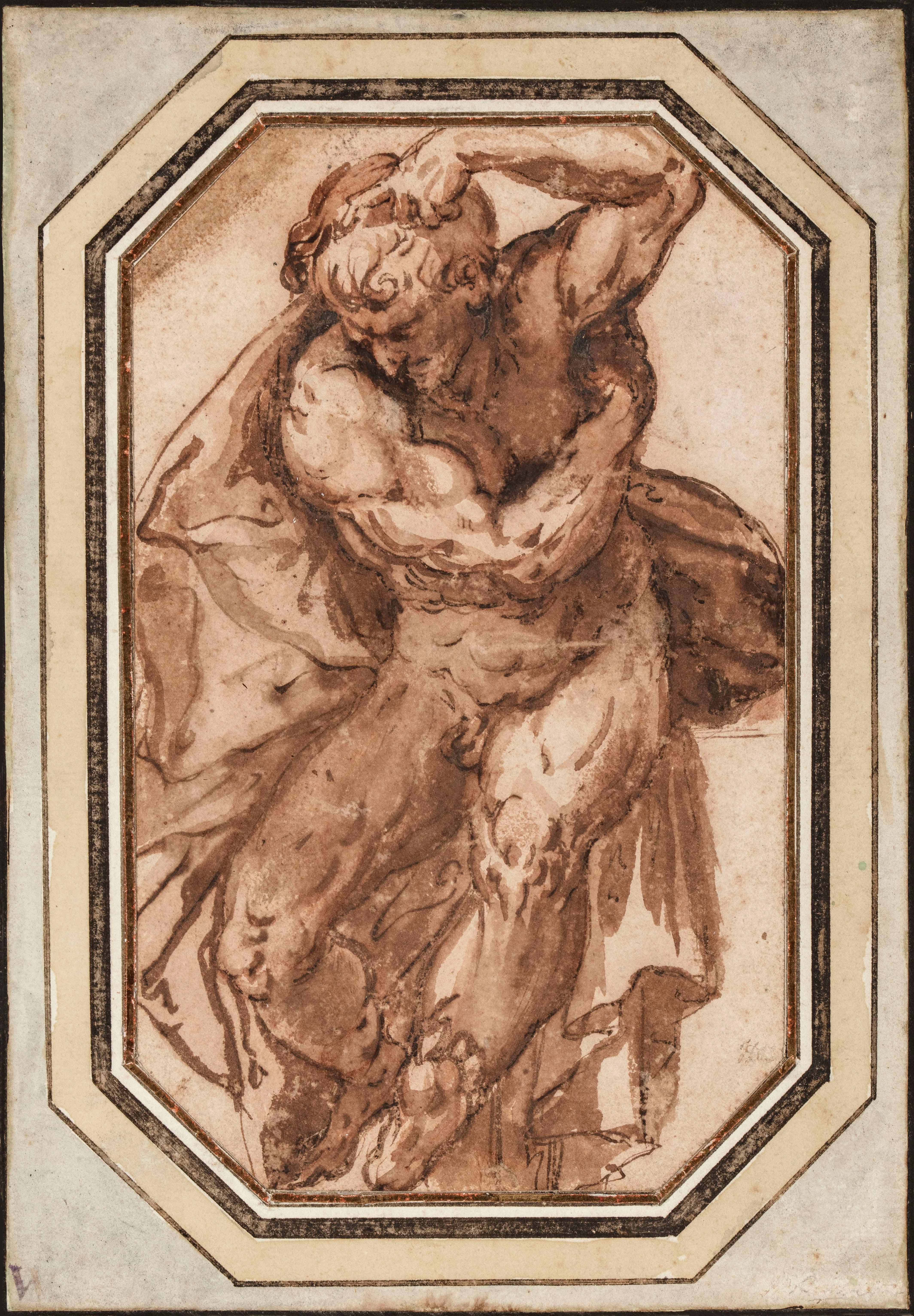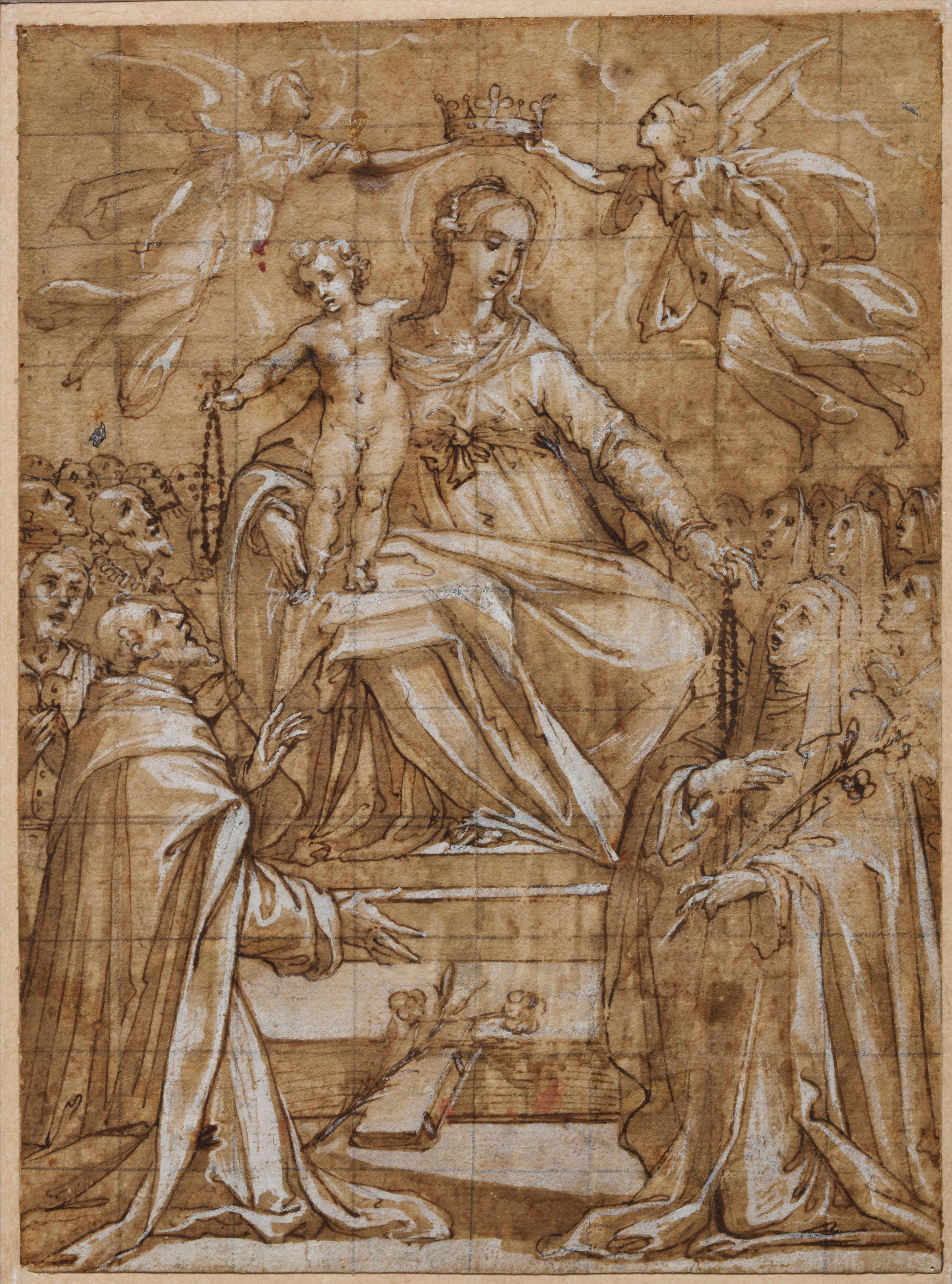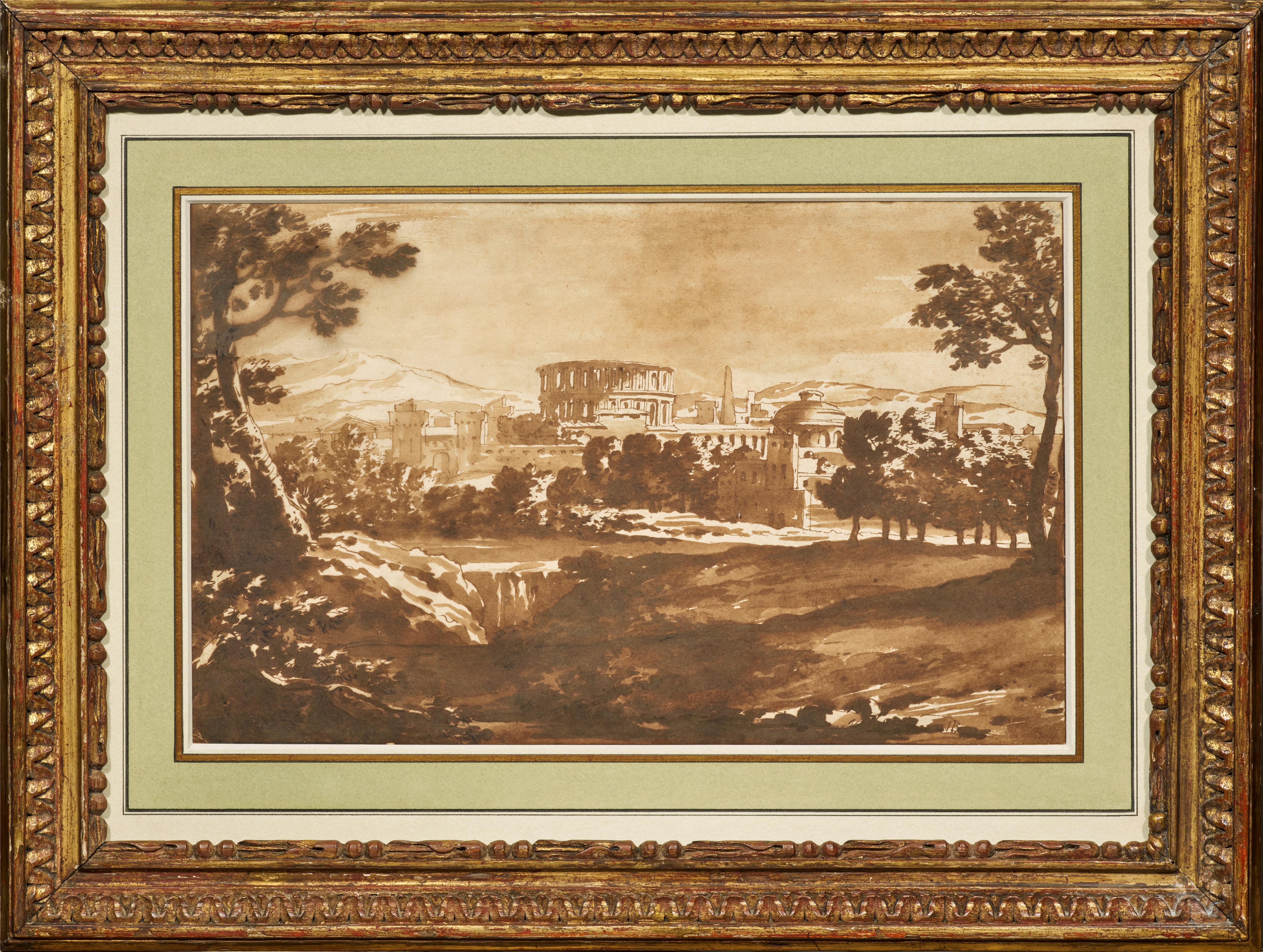Items Similar to William Locke (1767-1847) Brown Ink on Paper of General D'Arblay & Friends
Want more images or videos?
Request additional images or videos from the seller
1 of 6
William LockeWilliam Locke (1767-1847) Brown Ink on Paper of General D'Arblay & Friends
About the Item
Art Sz: 6 1/2"H x 5 3/4"W
Frame Sz: 9 1/2"H x 10"W
Sold at Sotheby's London July 7, 1983 lot 10.
- Creator:William Locke
- Dimensions:Height: 9.5 in (24.13 cm)Width: 10 in (25.4 cm)
- Medium:
- Period:
- Condition:
- Gallery Location:Bristol, CT
- Reference Number:
About the Seller
4.7
Vetted Seller
These experienced sellers undergo a comprehensive evaluation by our team of in-house experts.
Established in 2000
1stDibs seller since 2019
98 sales on 1stDibs
Typical response time: <1 hour
- ShippingRetrieving quote...Ships From: Bristol, CT
- Return PolicyThis item cannot be returned.
More From This SellerView All
- Evening Attire circa 1930s WatercolourLocated in Bristol, CTElegant watercolour portrait of a dapper gent in evening cutaway attire c1930s Art Sz: 12 1/4"H x 8 3/4"W Frame Sz: 17"H x 13 1/2"W in gilt bambooCategory
1930s Figurative Drawings and Watercolors
MaterialsInk, Pen
- Humphrey 1936 by "The Tout"Located in Bristol, CTOriginal caricature pen & ink artwork depicting Sir Humphrey de Trafford BT famous fox-hunter and Jockey Club steward sign (Peter Buchanan) The Tout & dated 1...Category
1930s Figurative Drawings and Watercolors
MaterialsPaper, Ink, Pen
- Chic Fashion Model circa 1950s Pen & Ink Fashion SketchLocated in Bristol, CTPen & ink c1950s fashion sketch in a gilt bamboo frame Art Sz: 8"H x 4 1/2"W Frame Sz: 11 3/4"H x 7 3/4"WCategory
1950s Drawings and Watercolor Paintings
MaterialsInk, Pen
- French Horse Trainer Original Pen & Ink Drawing by "Peb" (b.1926-)Located in Bristol, CTPen & ink illustration depicting a famous French horse trainer by Peb c1960s Art Sz: 11"H x 7"W Frame Sz: 15"H x 11"W Pierre Camille Lucien Hilaire J...Category
1960s Figurative Drawings and Watercolors
MaterialsInk, Pen
- Dapper Gent in White Dinner JacketLocated in Bristol, CTClassic pen & ink on paper drawing depicting a sartorially resplendent/ dapper gent sporting a peak lapel/ white dinner jacket c1940s Art Sz: 12 ...Category
1940s Figurative Drawings and Watercolors
MaterialsPaper, Ink, Pen
- "The Aga Khan & Gordon Richards" c1924 Pen & Ink DrawingLocated in Bristol, CTPair of pen & ink drawings c1924 depicting The Winning Owner, HH The Aga Khan & 4"H x 2 1/2"W A Popular Light-Weight, Gordon Richards 4 3/4"H x 3 1/4"W Art Sz: 7"H x 5"W Fram...Category
1920s Drawings and Watercolor Paintings
MaterialsInk, Pen
You May Also Like
- Orpheus and the Animals, A Study after an Ancient Bas-ReliefLocated in New York, NYInscribed “55” and “218” in the lower right Watermark: Heawood 1351 Laid down on historic Cassiano Del Pozzo mount (Mount Type A, 531 x 402 mm) Provenance: Commissioned by Cassiano dal Pozzo (1588–1637) for his Museo Cartaceo (Paper Museum) and kept in the library of his palazzo, via dei Chiavari, Rome Transferred with the entire dal Pozzo collection by fidecommesso to his younger brother, Carlo Antonio dal Pozzo (1606–1689); by descent to his second son: Gabriele dal Pozzo (d. 1695); by descent to his wife: Anna Teresa Benzoni and after her remarriage in 1697, the Marchesa Lancellotti de’ Ginnetti (d. 1736); by descent to their son: Cosimo Antonio dal Pozzo (d. 1740); by whom sold with the Dal Pozzo library in 1703 to: Pope Clement XI for the Vatican Library; by whom transferred as part of the Museo Cartaceo in January 1714 to his nephew: Cardinal Alessandro Albani (1692–1779), Palazzo ‘alle Quattro Fontane’ in Rome; by whom sold in 1762 to: James Adam, agent for the British Royal Librarian Richard Dalton (1715–1791) King George III of England, Buckingham House Among the sheets of the ‘Museo Cartaceo’ appropriated by Richard Dalton during a reorganization of the drawings, circa 1786-1788; his estate sale, Greenwood’s, London, 11-19 May 1791; where acquired by: John MacGowan...Category
16th Century Baroque Figurative Drawings and Watercolors
MaterialsPaper, Ink, Pen
- Study of a Franciscan Saint, probably San Diego de AlcaláLocated in New York, NYProvenance: Ivan E. Phillips, Montreal and New York, until 2023. The brothers Bartolomé Carducho and Vicente Carducho, both born and trained in Florence, settled in Spain where they made their careers. Vicente worked on numerous commissions for both the church and the Spanish court...Category
17th Century Old Masters Drawings and Watercolor Paintings
MaterialsPaper, Chalk, Ink, Pen
- Studies of a Seated Figure for “The Contest of the Minnesingers at the Wartburg”Located in New York, NYProvenance: Wilhelm Suida; thence by descent to: Robert L. and Bertina Suida Manning, New York, until 1996 Private Collection, USA. Moritz von Schwind had a long and varied career. He first trained at the Akademie der Bildende Künste in Vienna in the early 1820s, and by the 1840s held positions as professor of painting at the Städelsche Kunstinstitut in Frankfurt am Main and later at the Akademie der Bildenden Künste in Munich. Schwind was the painter and illustrator par excellence of medieval German...Category
1840s Drawings and Watercolor Paintings
MaterialsPaper, Ink, Pen
- Study of a Nude ManBy Francesco MaffeiLocated in New York, NYProvenance: John Barnard, London (Lugt 1419) or possibly Saint John Dent, London and Milton (Lugt 1438) Unidentified collector’s mark “W,” lower left of the mount (Lugt 2591a) Private Collection, USA. This expressive and boldly executed drawing is a work by Francesco Maffei...Category
17th Century Baroque Drawings and Watercolor Paintings
MaterialsPaper, Ink, Pen
- Modello for the Virgin of the Rosary, a drawing by Francesco Vanni (1563 - 1610)Located in PARIS, FRFrancesco Vanni is one of the last representatives of the long Sienese pictorial tradition. In this masterly composition in pen and ink wash, he presents the Virgin of the Rosary, holding the Child Jesus on her lap, surrounded on her right by Saint Dominic and on her left by Saint Catherine of Siena. The presence of these two emblematic saints of the Dominican order is a reminder of the devotion of this order to the Rosary. 1. Francesco Vanni, a Sienese painter of the Counter-Reformation Francesco Vanni was the most important Sienese painter of the late sixteenth century and a key Italian Counter-Reformation painter. He developed a very specific style, inspired not by Florentine models but rather by the Roman, Bolognese and Marche schools, and in particular by the work of his contemporary Federico Barocci (Urbino 1535 - 1612), despite the two artists never meeting. Francesco Vanni was born in Siena around 1563-1564. His father died in 1567 and his mother remarried Arcangelo Salimbeni (1536 - 1579), then one of Siena’s leading painters. His half-brother Ventura Salembini (1568 - 1613) also became a well-known painter. He continued his apprenticeship in Bologna and Rome, where he joined the painter Giovanni de Vecchi’s (1536 - 1614) studio, where he was greatly influenced, like other Tuscan painters of the time, by the art of Federico Barocci. He devoted himself mainly to religious painting, following the canons of the Counter-Reformation. Travelling between Siena, Rome, Bologna and Parma, in 1604, he settled in Siena, where he ended his life. Vanni was also an important member of the Confraternity of the Sacro Chiodo, renowned for its demanding religious practices. His legacy also includes some important engraved work. 2. Description of the artwork The Virgin is depicted enthroned in majesty, slightly taller than the other figures that she dominates from her pedestal. Her wide robe with marked folds evokes Renaissance statuary. She is crowned by two angels in the sky. These two angels are a reminder of the custom of adding angels to crown 13th century icons which was frequent at Vanni’s time. The Child Jesus is standing on the Virgin’s right knee. With her left hand she holds out a rosary to Catherine of Siena, identifiable by a branch of lily in her hand. In a symmetrical gesture, the Child Jesus also holds out a rosary to St Dominic. Two of St Dominic’s attributes are to be found at the foot of the Virgin: a book and a branch of lilies. Vanni gives particularly delicate treatment to St. Dominic's long and slender hands. The two outstretched rosaries form the link between the heavenly register of the Virgin and the Child Jesus and the earthly register of the two Dominicans who are not crowned with a halo. This and the fact they are followed by a large crowd, indicates that they are both represented as part of the multitude of the living called to pray to the Rosary. According to the classical iconographic tradition, it would be plausible to consider that the figure looking at the viewer on the extreme left of the drawing could be a self-portrait of the painter. Francesco Vanni's face is known to us from a self-portrait kept in the Pinacoteca Nazionale in Siena. The squaring of the drawing suggests that it was used for a larger-scale altarpiece, probably for a church dedicated to St Dominic or for a Dominican convent. As of today, we have not identified the painting for which this drawing served as a preparatory modello. The Madonna of the Rosary in the Cathedral of Pitigliano (painted by Francesco Vanni in 1609) differs quite significantly from our drawing by the addition of Pope Pius V, and the inclusion of St. Dominic and St. Catherine in the celestial register. We believe that our drawing predates this painting because of its more symmetrical composition, and less Baroque influence. The presence of Saint Catherine of Siena, particularly venerated in his native town, to which Francesco Vanni returned frequently from 1590 onwards, leads us to propose a date of around 1590 - 1600 for this drawing. 3. The Rosary and the Dominican Order In order to clarify the iconographic meaning of this artwork, it is worth recalling the role of Saint Dominic in the spread of the Rosary prayer. Dominic Nuñez de Guzman was born around 1170 in Caleruega (near Burgos) in Spain and died in 1221 in Bologna, Italy. He was the founder of the order of friar preachers, commonly known as the Dominicans. He was canonised by the Church in 1234 and has since been celebrated under the name of Saint Dominic. After three days of prayer in the forest of Bouconne, near Toulouse, Dominic is said to have received the Rosary as a means of converting the Cathar population. The Dominicans subsequently made a special effort to promote this form of meditative prayer. Pope Pius V, a Dominican, included the feast of the Rosary (on October 7th) in the liturgical calendar in 1571. Rosary prayer has evolved over the centuries and traditionally consists of the recitation of three rosaries (four since St John Paul II). Each rosary consists of five tens of "Hail Mary...Category
16th Century Old Masters Figurative Drawings and Watercolors
MaterialsPen, Ink
- View of an Antique City, a wash landscape by Jan de Bisschop (1628 - 1671)Located in PARIS, FRThe attribution to Jan de Bisschop has been confirmed by the RKD with the following comment: "We base this attribution on the dark washes, the subject represented and the monogram". ...Category
17th Century Old Masters Landscape Drawings and Watercolors
MaterialsInk, Pen
Recently Viewed
View AllMore Ways To Browse
Picasso Pen Ink Drawing
Japan Fish Stone
Sem Illustration
Bronze Sculpture Reef
Genevieve Seille
Marcel Lemar
Hydrangea Wallpaper
Jim Coates Collection
Teddy Parker
Adel Simpson
Palm Tree Lino Etching
Picasso Joyous King
H Baites Drawing
Joanie Ford Painting
Margaret Webster
Drawing Sketches
Seller 1861
India Menorah

